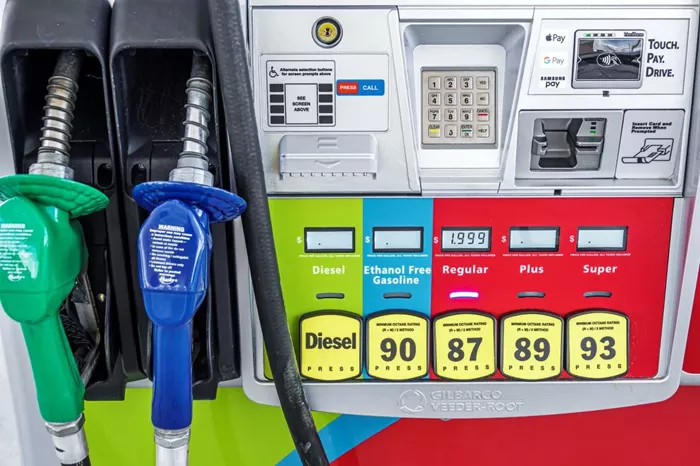Ethanol is a type of alcohol that is blended with gasoline to create fuel for cars and other vehicles. Many countries, including the United States, use ethanol in fuel to reduce emissions and dependence on crude oil. Ethanol is made from plants like corn and sugarcane. It is a renewable resource, unlike gasoline, which comes from crude oil. While ethanol has benefits, it also affects how gasoline performs in engines.
In this article, we will explore what ethanol does to gasoline. We will look at its effects on fuel efficiency, engine performance, and emissions. We will also discuss the advantages and disadvantages of ethanol in gasoline.
How Ethanol Blends with Gasoline
Gasoline with ethanol is called ethanol-blended fuel. The most common blend is E10, which contains 10% ethanol and 90% gasoline. Some fuels have higher ethanol content, like E15 (15% ethanol) and E85 (85% ethanol). Regular cars can use E10 without problems, but higher ethanol blends require special engines.
Ethanol mixes well with gasoline, but it also attracts water. This can cause problems in fuel storage and engine performance. Despite this, ethanol is widely used because it helps reduce pollution and supports local agriculture.
How Ethanol Affects Fuel Efficiency
One major effect of ethanol in gasoline is a decrease in fuel efficiency. Ethanol has less energy than gasoline. This means that a gallon of ethanol-blended fuel provides less power than pure gasoline.
For example:
- Pure gasoline has about 114,000 BTU (British Thermal Units) per gallon.
- Ethanol has about 76,000 BTU per gallon.
- E10 fuel has around 111,000 BTU per gallon.
Because ethanol has less energy, cars using ethanol-blended fuel may travel fewer miles per gallon. The higher the ethanol content, the lower the fuel efficiency. This is why vehicles using E85 get fewer miles per gallon compared to those using pure gasoline.
Impact on Engine Performance
Ethanol affects how engines perform in several ways:
- Higher Octane Rating: Ethanol has a higher octane rating than gasoline. This means it can improve engine performance in high-compression engines. Some race cars use ethanol because it allows for more powerful combustion.
- More Engine Deposits: Ethanol can clean engine parts by removing carbon deposits. However, it may also loosen dirt in the fuel system, leading to clogged filters and injectors.
- Increased Corrosion: Ethanol absorbs water, which can cause rust in metal engine parts. Older engines and fuel systems not designed for ethanol may experience more wear and tear.
- Cold Start Problems: Ethanol does not vaporize as easily as gasoline in cold temperatures. This can make it harder for cars to start in cold weather.
Environmental Benefits of Ethanol
One of the reasons ethanol is added to gasoline is to reduce emissions. Ethanol burns cleaner than gasoline, producing fewer harmful pollutants. Here are some environmental benefits:
- Lower Carbon Monoxide Emissions: Ethanol reduces carbon monoxide levels in exhaust gases.
- Less Greenhouse Gas Emissions: Ethanol comes from plants, which absorb carbon dioxide during growth. This helps offset emissions from burning fuel.
- Reduced Dependence on Fossil Fuels: Ethanol is renewable, unlike gasoline, which comes from crude oil. This makes fuel production more sustainable.
Disadvantages of Ethanol in Gasoline
Despite its benefits, ethanol also has some disadvantages:
- Lower Fuel Economy: As mentioned earlier, ethanol has less energy than gasoline. This means cars burn more fuel to travel the same distance.
- Higher Fuel Costs: Ethanol production can be expensive, and blending it with gasoline may increase fuel prices.
- Engine Wear and Corrosion: Ethanol attracts water, which can lead to rust and damage in fuel systems.
- Food vs. Fuel Debate: Since ethanol comes from crops like corn, using it for fuel can affect food prices and availability.
Ethanol and Modern Vehicles
Most modern vehicles are designed to run on ethanol-blended fuel. Manufacturers build engines and fuel systems that can handle E10 and sometimes E15. Flex-fuel vehicles (FFVs) can use E85 without problems.
However, older cars and small engines (like those in boats, lawnmowers, and motorcycles) may have trouble with ethanol. It is important to check the vehicle’s manual before using higher ethanol blends.
Ethanol and Fuel Storage
Storing ethanol-blended fuel for long periods can be problematic. Because ethanol attracts water, it can cause phase separation. This means the ethanol and water settle at the bottom of the fuel tank, leading to poor engine performance. To prevent this, fuel stabilizers can be used, and fuel should be stored in airtight containers.
Conclusion
Ethanol in gasoline has both advantages and disadvantages. It helps reduce emissions and dependence on crude oil, but it also lowers fuel efficiency and may cause engine problems. While ethanol is widely used, it is important for consumers to understand how it affects their vehicles. Using the right fuel for the right engine can help maximize performance and prevent damage. As technology improves, ethanol fuels may become even more efficient and beneficial in the future.

